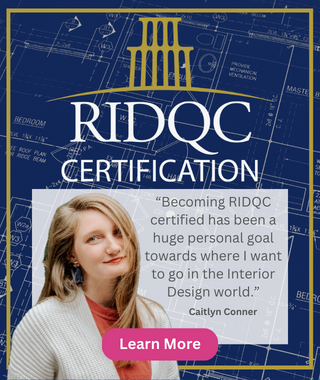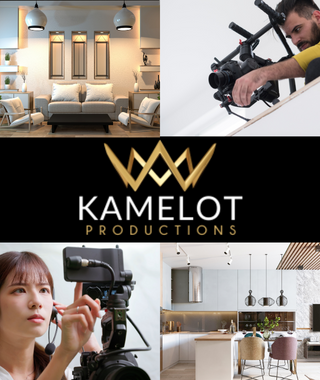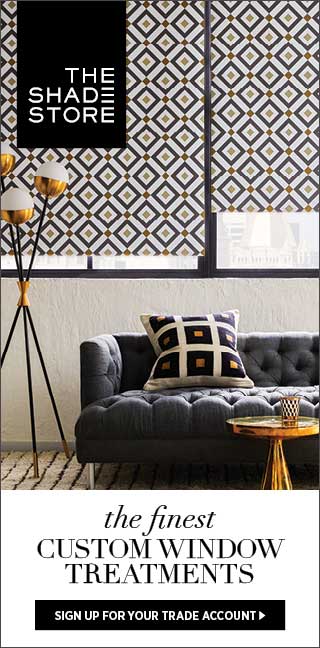FREE Registration for Designers - Connect with Potential Customers
Create the Perfect Space with iHome Registry
 A new tool is changing the way interior designers and homeowners collaborate on the home furnishing process before making purchasing decisions.
A new tool is changing the way interior designers and homeowners collaborate on the home furnishing process before making purchasing decisions.
iHomeRegistry is an all-in-one home furnishing web application designed with a user-friendly platform that enables both interior designers and their clients to create a 3D rendering of a room, experiment with mockups, furniture placements, and decor arrangements. You can even "walk" through the interior spaces of a home in 3D real time - helping both parties feel confident with each home furnishing decisions.
Though only available since early summer, the site is drawing record numbers of users, says Patrick Daniels who, along with his wife Lakin, started the business.
"This is more of an all-in-one and focus is on the designer/client relationship," he says. "We're giving them a best case scenario for their own individual process. Designers are always looking for exposure, more clients, and better ways to visualize their ideas. Now they have a place to show off their work and really connect on a higher level with other designers."

With the ability to archive, organize and compare a variety of home goods and designs, users can find just what they're looking for, for every space they need, for a price that fits their budget.
The Daniels were encouraged by the fast rate by which the number of users grew, and the number continues to increase. "We've seen unexpected growth," says Patrick. "We knew we had a good idea but were still nervous."
Soon the site will include an eCommerce aspect and mood boards will be made available on the designer profiles. In addition, 3D boards will soon be available for a reasonable fee with a monthly subscription or even a lifetime subscription available.
Check out the site for yourself at https://ihomeregistry.leadpages.co/ihome1/#/
CONTINUING EDUCATION. SHAPING THE FUTURE.
Note: This article was previously shared in the newsletter, but we thought that it was important enough to share again. You'll also notice some interesting feedback one of your fellow members shared regarding the proper recording of your CEUs (continuing education credits). We hope you'll find it beneficial.

How important are Continuing Education Units (CEUs)? DSA has not forced them upon you and made them a requirement for membership in the past, so does this mean that they are meaningless?
The answer is NO.
As a professional who markets services to the public, you want to be in the know and well-versed on the current market trends as well as consumer safety and health regulations. The societies who do regulate CEUs suggest earning 10 CEUs every two years. This is not a difficult task with the availability of distance learning and webinars. If you want to be part of what's going on and stay relevant in today's market, it's crucial to be part of this culture.
There is a company that will help you register your CEUs and keep track of them. This company also provides an extensive list of CEUs available across the nation. For your convenience, we have provided a link to the site below:
https://www.idcec.org/pages/forms/public/Registry/RegistryBase.aspx?category=learner
At no cost to you, you can set up an account. So what is available after this process? Click on the "event calendar" tab at the top, choose "distance learning" and click "search." Then you are on your way to discovering your personal path. If you find that you are interested in several of the topics, click and register with them so you will be included in future classes. Education is the key to success!
Here is what the organization will do for you:
The IDCEC centralized continuing education registry gives you access to your personalized account, enabling you to:
• Report IDCEC approved courses and conferences
• Report non-IDCEC courses and conferences
• Upload back up documentation such as certificates of completion and validated conference cards
• Print your unofficial transcript of CEU activity
• Order an official IDCEC transcript
Please feel free to reach out to us if we can be of further assistance.
Warm regards,
DSA staff
P.S. DSA member Joseph Kincaid shared this insight regarding the proper recording of CEUs when using this site.
I heard back from IDCEC. Your "attendance" has to be received by IDCEC (this would entail logging into the approved course provider with your IDCEC number). Although I was not prompted to do this on the course provider's link, IDCEC was able to upload my certificate of completion.
I self-reported a course that was not "approved" and paid a fee for both courses (standard procedure). I then took a brief survey and uploaded my certificate of completion for the non-approved course after payment (around $4 US per CEU). I inquired about how to know if a course is approved since both showed up on the approved course provider's list and am awaiting response.
Hope this helps.
Joe
And his follow up message to fellow DSA members:
AEC Daily is where I took my two courses. There may be others but have DSA members check if the sponsor's course is IDCEC approved. You may also want to let DSA members know to add their IDCEC member number to AEC Daily's site (their website is aecdaily.com) by going to "Edit My Profile," clicking on "other details," and adding their member number under the IDCEC field.
IDCEC approved courses are under the "Certification" tab on the course selection link on AEC Daily. By adding your IDCEC number, you will enable AEC to directly report all CEU courses every week to IDCEC. I'm getting quite the education here - both organizations (AEC Daily and IDCEC) have been extremely helpful!
FYI - Sherwin Williams is offering a fantastic course on color! You must register with IDEC prior to enrolling in class. IDEC enrollment is free. Below is the link to the course:
Sherwin Williams
http://www.sherwin-williams.com/architects-specifiers-designers/
Also from Sherwin Williams...
Incorporating Iridescence
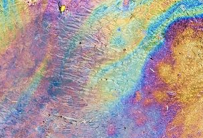 From hummingbird wings to jewel beetle carapaces and mother-of-pearl to fish scales, iridescence - a form of structural color - is one of the most visually compelling displays in the natural world. Its shimmering, metallic qualities draw in the eye and capture attention. So what makes iridescence such a unique form of color? And how do you hone its brilliance in design? Structural color science provides some insight.
From hummingbird wings to jewel beetle carapaces and mother-of-pearl to fish scales, iridescence - a form of structural color - is one of the most visually compelling displays in the natural world. Its shimmering, metallic qualities draw in the eye and capture attention. So what makes iridescence such a unique form of color? And how do you hone its brilliance in design? Structural color science provides some insight.
Structural color, unlike colors produced by pigments or dyes, is a result of the interaction between light and biological nanostructures. This means iridescence relies on shape and materials, rather than chemical properties. When light hits these nanostructures - proteins in a feather, collagens, cellulose, or keratin - the refraction acts like a prism, splitting the light into the iridescent colors. The most brilliant part about this display is its ability to transform and shimmer as the eye's observation angle changes, creating an ever-changing experience for the viewer.
While iridescence is naturally occurring across animals, plants and certain minerals, it can't technically be painted because it's not a pigment. Regardless of this challenge, designers and architects can still find ways to incorporate it into their projects.
"Iridescence is difficult to replicate in coatings, but there are several design surfaces that look amazing in an iridescent finish," says Sue Wadden, director of color marketing for Sherwin-Williams.
She suggests using a glass, ceramic, textile, tile, lighting or hard surface furniture with an iridescent or holographic finish as your first design element, and then pull color from its kaleidoscope for your paint inspiration. "This technique makes for bold and interesting color styling," says Wadden. "Or you can pair your iridescent piece with white or black paint to make the iridescence really pop."
From softly ethereal pastel tones to deep and inky oil-slicked hues, incorporating even a small amount of iridescence creates a compelling, otherworldly atmosphere. "What I love most about iridescence is that it's science, biology and a hint of technology all wrapped up in one mercurial surface - inspiration can come from a beetle carapace to an automotive finish," she says. "What other finish has that broad of a range?"
Source: http://www.sherwin-williams.com
 We enjoy putting together these newsletters for our members, sharing stories of success, ideas that serve to motivate us all to be our very best, and details on innovations from around the world that somehow relate to interior design and the ins and outs of daily living. We're always open to suggestions regarding what you'd like to see in this newsletter, so please reach out with any ideas or suggestions.
We enjoy putting together these newsletters for our members, sharing stories of success, ideas that serve to motivate us all to be our very best, and details on innovations from around the world that somehow relate to interior design and the ins and outs of daily living. We're always open to suggestions regarding what you'd like to see in this newsletter, so please reach out with any ideas or suggestions. 
 As an innovator in the woodworking industry and a master woodworker himself, Jerry has long understood the pivotal role technology plays in reducing waste and protecting our natural environment. Jerry's deep appreciation of wood's distinct ability to transform décor naturally led him to utilizing wood planking which traditionally has been a labor-intensive and costly endeavor. Armed with 30 years of experience and an ever-present willingness to try new things, Jerry developed the innovative product now known as Stikwood.
As an innovator in the woodworking industry and a master woodworker himself, Jerry has long understood the pivotal role technology plays in reducing waste and protecting our natural environment. Jerry's deep appreciation of wood's distinct ability to transform décor naturally led him to utilizing wood planking which traditionally has been a labor-intensive and costly endeavor. Armed with 30 years of experience and an ever-present willingness to try new things, Jerry developed the innovative product now known as Stikwood.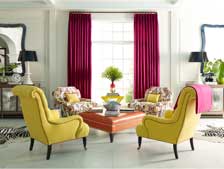 As you make the transition, your DSA support team will be available to answer any questions you might have regarding the new site and uploading your profile and portfolio. Remember, this is your website! We've made it as user-friendly as possible to encourage more of you to use it and share it with others. The more visitors we can attract the more opportunities you have to share your talents and connect with new clients. Photo courtesy of Kravet Curated
As you make the transition, your DSA support team will be available to answer any questions you might have regarding the new site and uploading your profile and portfolio. Remember, this is your website! We've made it as user-friendly as possible to encourage more of you to use it and share it with others. The more visitors we can attract the more opportunities you have to share your talents and connect with new clients. Photo courtesy of Kravet Curated While residential interior designers focus most of their energy on the interior, we've discovered some innovative young minds whose design focus is on the exterior, specifically the backyard garden. Founded on the belief that a more open food system is a better one, FarmBot is an innovative home gardening robot that will be available to the consumer early next year.
While residential interior designers focus most of their energy on the interior, we've discovered some innovative young minds whose design focus is on the exterior, specifically the backyard garden. Founded on the belief that a more open food system is a better one, FarmBot is an innovative home gardening robot that will be available to the consumer early next year. A new tool is changing the way interior designers and homeowners collaborate on the home furnishing process before making purchasing decisions.
A new tool is changing the way interior designers and homeowners collaborate on the home furnishing process before making purchasing decisions.

 From hummingbird wings to jewel beetle carapaces and mother-of-pearl to fish scales, iridescence - a form of structural color - is one of the most visually compelling displays in the natural world. Its shimmering, metallic qualities draw in the eye and capture attention. So what makes iridescence such a unique form of color? And how do you hone its brilliance in design? Structural color science provides some insight.
From hummingbird wings to jewel beetle carapaces and mother-of-pearl to fish scales, iridescence - a form of structural color - is one of the most visually compelling displays in the natural world. Its shimmering, metallic qualities draw in the eye and capture attention. So what makes iridescence such a unique form of color? And how do you hone its brilliance in design? Structural color science provides some insight.
